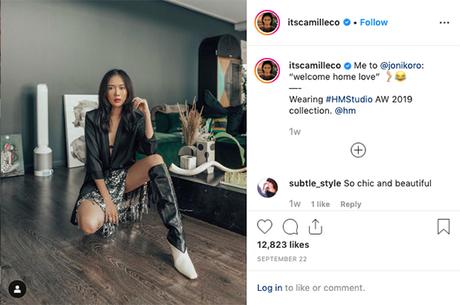If you think you have enough traffic on your e-commerce website, you are wrong. There is never enough traffic and you need to constantly be looking for ways to increase it. Logically, here are five ways to drive traffic to your e-commerce website.
Search Engine Optimization
You probably heard these three words together many times now. SEO is really that important and you should never overlook it as something secondary. If you know how to use different SEO techniques to your advantage, you will be able to drive tons of traffic to your website.
When somebody uses a search engine such as Google, they are looking for answers to their questions. Consequently, if you can provide them with relevant answers, they will be more than willing to read your content and visit your website (and then, hopefully, purchase something). This is why your e-commerce website needs to have a blog.
Your blog is the perfect place for publishing relevant articles for your audience that will be optimized for search engines with the help of appropriate keywords. However, you should still remember other pages on your website. Optimizing them is crucial too. For example, your product pages will need to have descriptions with relevant keywords in them.
If you don't have a blog yet, ask yourself these questions:
- What problems do my customers have?
- What questions will they be asking?
- What are their interests, hobbies, habits, etc.?
- How can I satisfy their needs and solve their problems?
Once you have the answers, you can start thinking about your content strategy. Make a guide for yourself with details on which topics you will be writing about, what format will you stick to, what types of content you will be producing (along with articles), and so on.
Email Marketing
Another great way to drive traffic to your place e-commerce website is with the help of email marketing. If you already have an email list, this won't be a problem. But if you don't, you can always start from the very beginning and start growing your email list.
You may think that email marketing is dead, but it is actually still pretty effective and has considerably high open rates. A good email marketing strategy will have each stage planned well to guide customers on every step of the sales funnel. Here are some tips on how to make your email marketing as effective as possible:
- Provide Value: Always send out quality content so that your readers want to open the emails and then click on the links in them. Your audience wants to see relevant and useful information.
- Segment Your Audience: Likewise, don't assume that all of your customers are the same. You want to segment your audience in a way so that everyone gets what they are looking for. Divide your audience into groups according to the actions they have completed (e.g. purchased something and got on your list this way, directly subscribed to your list, participated in a giveaway you held).
- Adjust Your Email List: Don't simply grow your list, but revisit it regularly to see who can be "kicked out of it". If you see someone who hasn't been opening your emails continuously, maybe they are not worth spending your time on and you need to focus more or the engaged subscribers.
Retargeting
Retargeting (also known as remarketing) is a fascinating technique that can work wonders when you use it well. The point is that after your potential customer visits your website, they will then see an ad on Facebook with your products. How cool is that? We will talk about Facebook Ads later, but for now, let's focus on the technique itself.
Retargeting will only work if you have a variety of ads to show to your potential customers. If someone visited your website and read an article in your blog section about how to match summer dresses with summer hats, you will want to show them an ad featuring either one of your summer dresses or one of your summer hats. But if someone looked at a bracelet you are selling but didn't purchase it, you will want to show them an ad with an article talking about bracelets.
It all depends on the situation and you will have to segment your audience a lot too. You will also need to exclude your existing customers as they are unlikely to make a second purchase within a short period of time. Likewise, being too clingy with retargeted ads is also not a good idea as people get annoyed and even start feeling like you are following them around the Internet.
Facebook Ads
According to the Internet Trends Report 2018, 78% of American consumers have discovered products on Facebook. It's not that people go to Facebook to make a decision to buy something (actually, it's where they go in order not to make any decisions), but it's still a fact that this social media platform has become a critical source of e-commerce traffic.
One of the reasons for this is obviously the Facebook Ads feature, but you can still benefit a lot from simply posting to your business profile regularly. However, it's difficult to reach larger audiences this way, so many e-commerce store owners have turned to ads.
A good idea for your own Facebook Ads campaign would be to focus on promoting content rather than promoting a specific product you sell. This is because an in-your-face ad featuring something that people haven't heard of before will most likely be ignored whereas an ad for one of your articles will get more attention.
Influencer Marketing
Last but not least, influencer marketing is one of the best ways to drive traffic to your e-commerce website specifically from social media or blogs. Influencers on both of these platforms already have an established and dedicated audience that will be likely to purchase something if the influencer recommends it to them.

There are two types of influencers that you could be working with: macro-influencers and micro-influencers. Macro influencers usually have thousands or even millions of followers while micro-influencers may have a few dozens at most. Both types have their advantages though: macro-influencers have a bigger reach while micro-influencers usually have more engagement.
After you decide which type of influencers you want to work with, start looking for the influencers themselves. Get in touch and set your terms. If the influencer agrees, they will create content for you that will link back to your e-commerce site and drive traffic to it.
Final Thoughts
To sum up, ads may be a good source of traffic for your e-commerce website, but they can't do the whole job by themselves and you need to find other ways to drive traffic to your website. The ways presented in this article should be enough, so go ahead and try them out.

